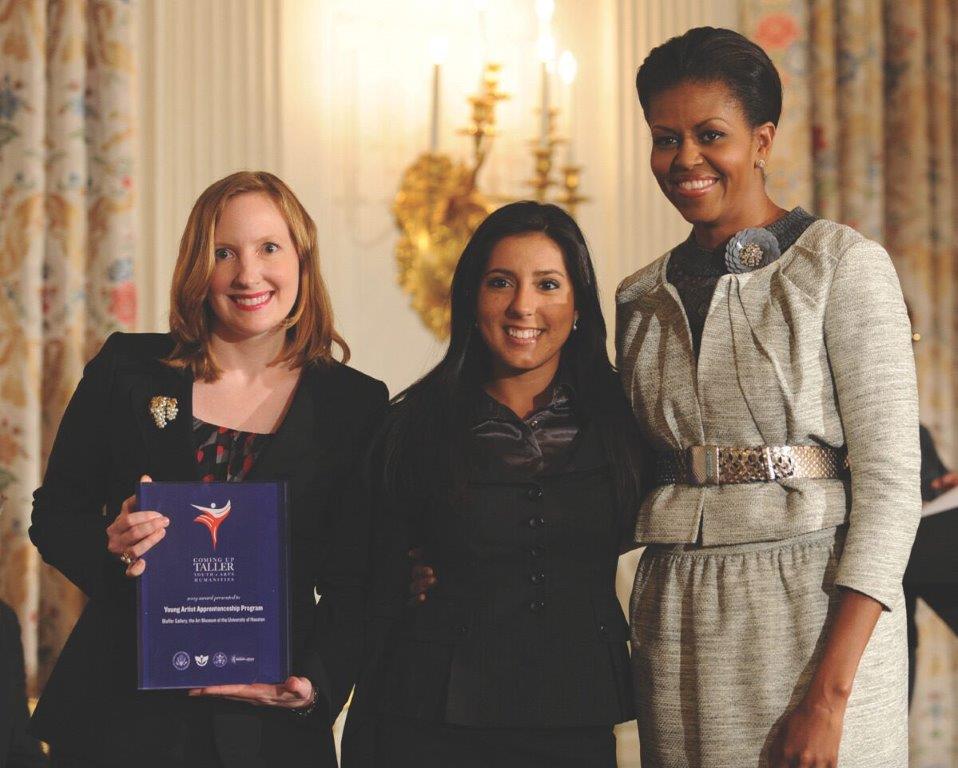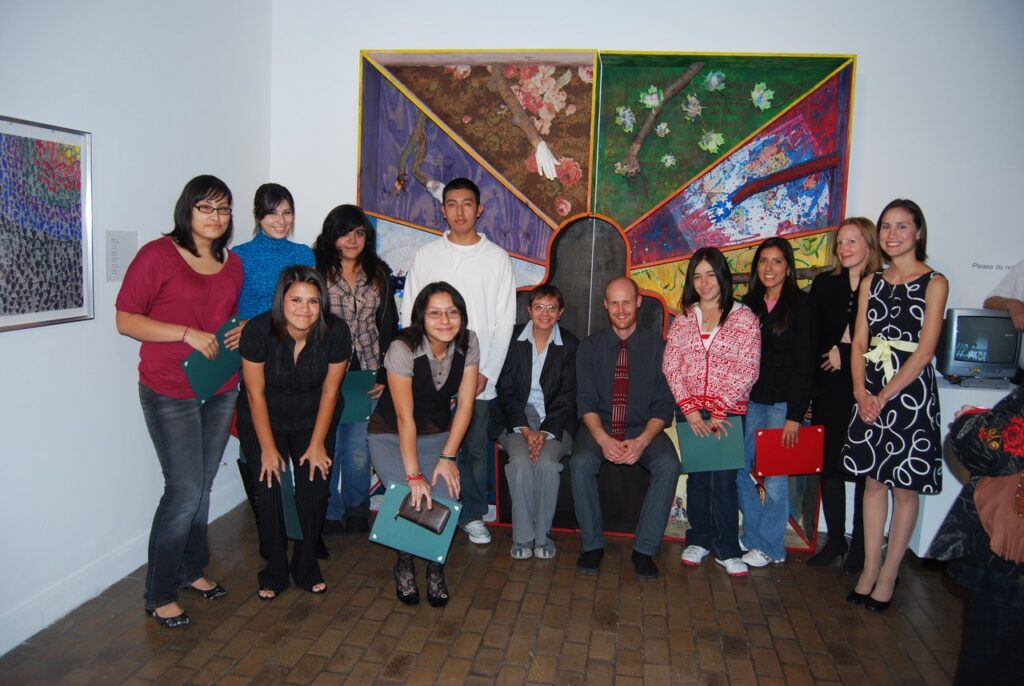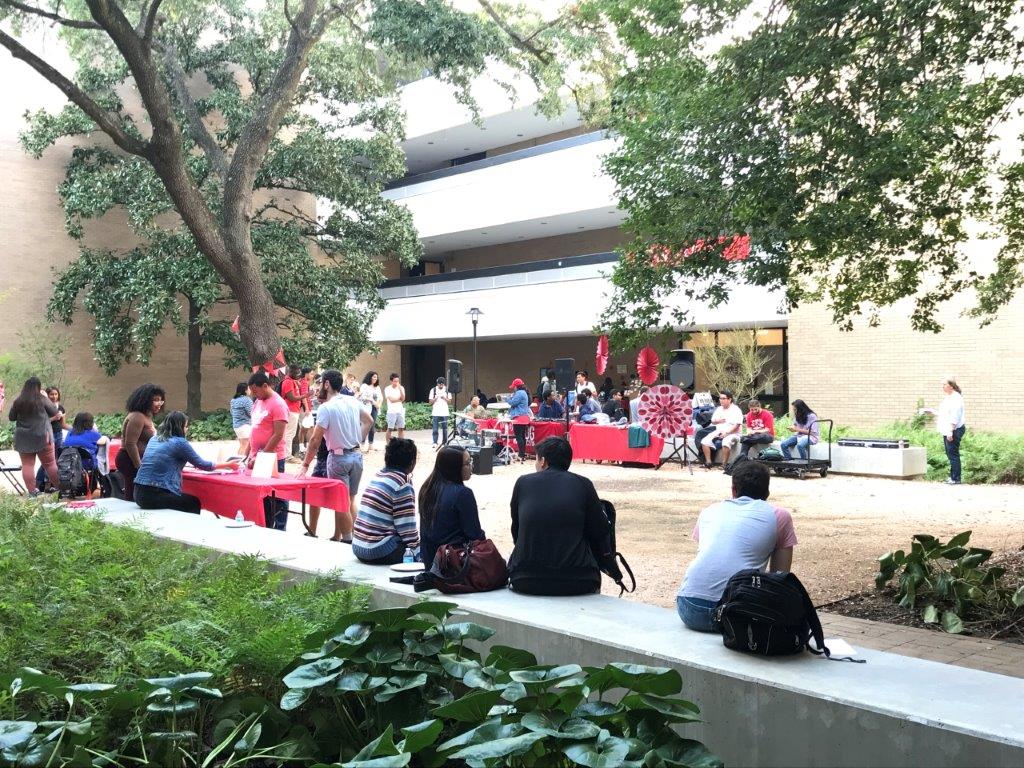By Katherine Veneman

The Blaffer has a particular energy, sparked by intellectual freedom and curiosity that motivates the best programs. Programs often begin with a simple query, “What if?” Their subsequent development is driven by a combination of perceived community needs, availability of funding, strong leadership, collaboration, and teamwork. Directors and curators continually bring challenging new ideas to the fore, and the education department follows suit.
When I became Blaffer’s curator of education, I found a myriad of educational programs already in place and the real challenge was to make a roadmap for the future. Before my arrival, the museum laid a foundation to prioritize learning through its programming. In 1988, under director Marti Mayo, the Blaffer Gallery began UH Reach, a tour program for elementary, middle, and high school students from surrounding neighborhoods, led by a team of education assistants. By the late 1990s, UH Reach had built partnerships with eighteen schools and Susana Monteverde, Blaffer’s curator of education from 1996 to 2001, organized multilingual tours for more than 8,000 school children a year as well as visitors from community centers, daycare centers, and organizations for people over sixty-five. Monteverde also generated two new initiatives, the Young Artist Apprenticeship Program (YAAP) and the Mobile Art Quest (MAQ).
Between 1998 and 2013, YAAP evolved into an after-school workshop for students from nearby high schools. The program was held twice each year in two six-week sessions, four days per week. Students worked with artist mentors to make artwork informed by concepts and materials used in museum exhibitions. Program goals included building students’ critical thinking and collaborative abilities, developing art-making skills, and increasing their self-confidence as active participants in a university environment. Each workshop culminated with an exhibition at the Blaffer and the awarding of scholarships. In 2009 YAAP alumna Jessica Flores and I traveled to Washington, D.C. to accept the Coming Up Taller award from First Lady Michelle Obama at a White House ceremony. The prestigious award recognizes outstanding afterschool and out-of-school arts and humanities programs that provide young people with learning opportunities and skill-building exercises.

MAQ was a “museum on wheels” that traveled across the region to reach more than 23,000 students in its three years of operation, from 2001 to 2003. MAQ’s goal was to “encourage creativity and discussion of the wonders of looking at art and making art.” Beginning and ending with classroom discussions, MAQ coordinator Carrie Markello and her team guided elementary school students through the “Concept” space and the “Action” room before finishing with a “Critique,” where students received a printout and photo documenting their journey.
Programs incorporating mentorship forged a dynamic community by connecting museum constituents. Mentorship happens in a university setting in a way that it cannot in other museum environments. For example, internships promote peer learning between graduate students and undergraduate interns; teaching artists guide K–12 learners who envision themselves as prospective university students; docents with different experiences— as professionals and as students—learn from each other.
Established in 2005, the Blaffer Art Museum Student Association (BAMSA) is a vibrant forum for students to discuss, engage with, and contribute to artistic expression. A generation of BAMSA members have studied a range of subjects, from the arts and humanities to engineering and business. Current president, Rothnica Marin describes her vision for the BAMSA as “the central highlight of the art scene at the University of Houston and in the wider city community. Our plan is to expand the community we have created, where individuals can connect with others who share their passion for creativity and build an inclusive and collaborative environment.”
Over the years, the Blaffer has organized innumerable public programs spanning artist talks, roundtables, and scholarly lectures to performances, workshops, and artist-led participatory projects. Programs directed to students have advanced curricular outcomes while building a creative, social community that extends off campus. From its inception in 2004 to the present, the Cynthia Woods Mitchell Center for the Arts has been the most extensive and consistent partner for the Blaffer’s programs. For example, from 2006 to 2009, Artists Up Close—started by Terrie Sultan, Karen Farber (then the Mitchell Center’s director), and me—presented a series of lectures, performances, and engagements with artists featured in current Blaffer exhibitions.
The Blaffer’s Guided Tour program reaches more than fifty school groups, community organizations, and university classes annually, with free in-person and virtual tours. We work together to craft tours that are individual, inquiry-based, and audience driven. The close-knit team meets at the start of new exhibitions to tour with artists and curators, to analyze and find connections between exhibition content, and to anticipate visitor reactions. Ultimately, they hope to spark inquiry for each tour member. “I think that our tours promote an inquiry-based teaching approach, and usually it’s something completely different from what students are used to,” remarks Yuna Dranichnikova, a Blaffer docent and MA graduate in Arts Leadership. “Because we don’t simply lay out facts, the students tend to get more engaged in the process, and for some, it feels like a breath of fresh air when they are able to speak up and share their own ideas and interpretations.”

Today, the Blaffer’s programming is more robust after a resurgence of in-person attendance following the pandemic. In 2022, we presented sixty public and educational programs, an increase of 20 percent from pre-pandemic levels. I am fortunate to be part of the Blaffer Art Museum as we position ourselves as a nexus for learning, engagement, and the generation of new ideas. Bolstered by the leadership of Steven Matijcio, who prioritizes public and educational, student-centered programming, and the increased resources of the Kathrine G. McGovern College of the Arts, the Blaffer will continue to innovate and provide value to our community.
To view the pdf, click here, or click on Buy Magazines above to order a print copy.

Young Artists Apprenticeship Program. Photo courtesy of Blaffer Art Museum.

 Follow
Follow